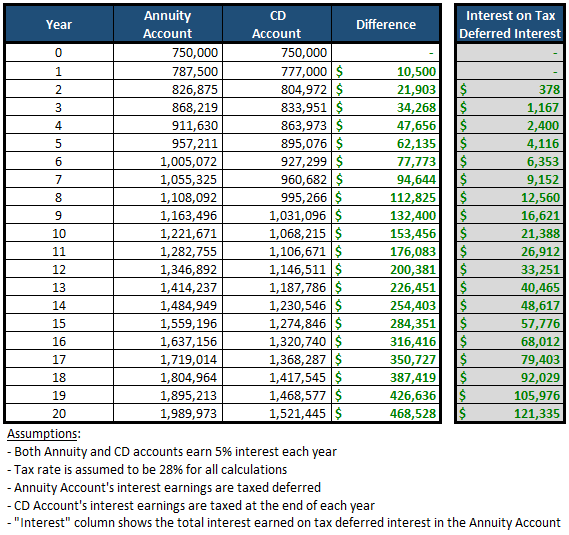All Categories
Featured
Table of Contents
This five-year general rule and two adhering to exemptions use only when the owner's death activates the payment. Annuitant-driven payments are discussed listed below. The initial exemption to the basic five-year guideline for specific recipients is to approve the survivor benefit over a longer duration, not to exceed the expected life time of the beneficiary.
If the beneficiary chooses to take the death advantages in this method, the advantages are exhausted like any various other annuity payments: partially as tax-free return of principal and partly gross income. The exemption ratio is discovered by utilizing the deceased contractholder's expense basis and the expected payments based on the recipient's life span (of much shorter duration, if that is what the recipient picks).
In this approach, often called a "stretch annuity", the recipient takes a withdrawal yearly-- the called for quantity of yearly's withdrawal is based upon the very same tables made use of to compute the needed distributions from an IRA. There are two advantages to this approach. One, the account is not annuitized so the recipient preserves control over the cash value in the contract.
The second exemption to the five-year rule is offered only to an enduring partner. If the designated recipient is the contractholder's partner, the partner might elect to "enter the footwear" of the decedent. Essentially, the partner is dealt with as if she or he were the proprietor of the annuity from its inception.
Inherited Deferred Annuities tax liability
Please note this uses just if the partner is called as a "designated beneficiary"; it is not available, as an example, if a trust is the beneficiary and the partner is the trustee. The basic five-year rule and the 2 exceptions just use to owner-driven annuities, not annuitant-driven agreements. Annuitant-driven contracts will pay fatality advantages when the annuitant passes away.

For functions of this discussion, assume that the annuitant and the proprietor are different - Annuity withdrawal options. If the agreement is annuitant-driven and the annuitant dies, the fatality activates the survivor benefit and the recipient has 60 days to make a decision just how to take the survivor benefit based on the terms of the annuity contract
Note that the option of a spouse to "step right into the footwear" of the proprietor will not be offered-- that exception applies only when the owner has passed away however the owner didn't pass away in the instance, the annuitant did. If the beneficiary is under age 59, the "fatality" exception to prevent the 10% fine will certainly not apply to an early circulation once again, since that is available just on the death of the contractholder (not the fatality of the annuitant).
Numerous annuity business have inner underwriting policies that decline to release contracts that name a different owner and annuitant. (There might be weird circumstances in which an annuitant-driven contract satisfies a customers distinct requirements, yet generally the tax negative aspects will outweigh the advantages - Annuity interest rates.) Jointly-owned annuities may pose comparable problems-- or at the very least they may not offer the estate preparation function that jointly-held assets do
Because of this, the death benefits need to be paid out within 5 years of the very first owner's fatality, or based on the two exemptions (annuitization or spousal continuance). If an annuity is held jointly in between a partner and spouse it would certainly show up that if one were to pass away, the various other might simply proceed ownership under the spousal continuation exception.
Assume that the partner and other half named their child as beneficiary of their jointly-owned annuity. Upon the death of either owner, the business must pay the fatality benefits to the kid, that is the beneficiary, not the enduring spouse and this would probably beat the owner's intents. Was wishing there might be a device like setting up a recipient IRA, however looks like they is not the case when the estate is setup as a beneficiary.

That does not identify the kind of account holding the acquired annuity. If the annuity remained in an acquired individual retirement account annuity, you as administrator need to have the ability to designate the acquired IRA annuities out of the estate to inherited IRAs for each estate recipient. This transfer is not a taxable event.
Any circulations made from acquired Individual retirement accounts after assignment are taxable to the beneficiary that obtained them at their average revenue tax rate for the year of distributions. If the acquired annuities were not in an IRA at her fatality, after that there is no means to do a straight rollover right into an inherited IRA for either the estate or the estate recipients.
If that happens, you can still pass the circulation via the estate to the specific estate beneficiaries. The tax return for the estate (Type 1041) might consist of Form K-1, passing the earnings from the estate to the estate recipients to be taxed at their specific tax obligation prices as opposed to the much higher estate earnings tax prices.
Tax implications of inheriting a Annuity Income

: We will create a plan that consists of the very best products and features, such as boosted death advantages, premium perks, and permanent life insurance.: Get a tailored method developed to optimize your estate's worth and decrease tax obligation liabilities.: Apply the selected approach and get ongoing support.: We will assist you with establishing the annuities and life insurance policy plans, offering constant assistance to make sure the plan stays reliable.
Needs to the inheritance be regarded as an income related to a decedent, then tax obligations might apply. Generally speaking, no. With exemption to retired life accounts (such as a 401(k), 403(b), or individual retirement account), life insurance policy earnings, and cost savings bond rate of interest, the beneficiary typically will not have to bear any type of income tax on their inherited riches.
The amount one can acquire from a trust fund without paying taxes depends on various aspects. Private states might have their very own estate tax obligation regulations.

His mission is to simplify retirement planning and insurance, guaranteeing that clients recognize their options and safeguard the most effective protection at irresistible prices. Shawn is the founder of The Annuity Professional, an independent on the internet insurance policy agency servicing consumers across the USA. Via this system, he and his group goal to get rid of the uncertainty in retirement preparation by helping people locate the very best insurance protection at the most affordable prices.
Table of Contents
Latest Posts
Understanding Choosing Between Fixed Annuity And Variable Annuity Everything You Need to Know About Fixed Income Annuity Vs Variable Growth Annuity Defining Deferred Annuity Vs Variable Annuity Featur
Analyzing Variable Annuity Vs Fixed Indexed Annuity Everything You Need to Know About Variable Annuity Vs Fixed Indexed Annuity Breaking Down the Basics of Fixed Annuity Vs Equity-linked Variable Annu
Exploring the Basics of Retirement Options A Comprehensive Guide to Variable Vs Fixed Annuity Breaking Down the Basics of Fixed Index Annuity Vs Variable Annuity Pros and Cons of Indexed Annuity Vs Fi
More
Latest Posts